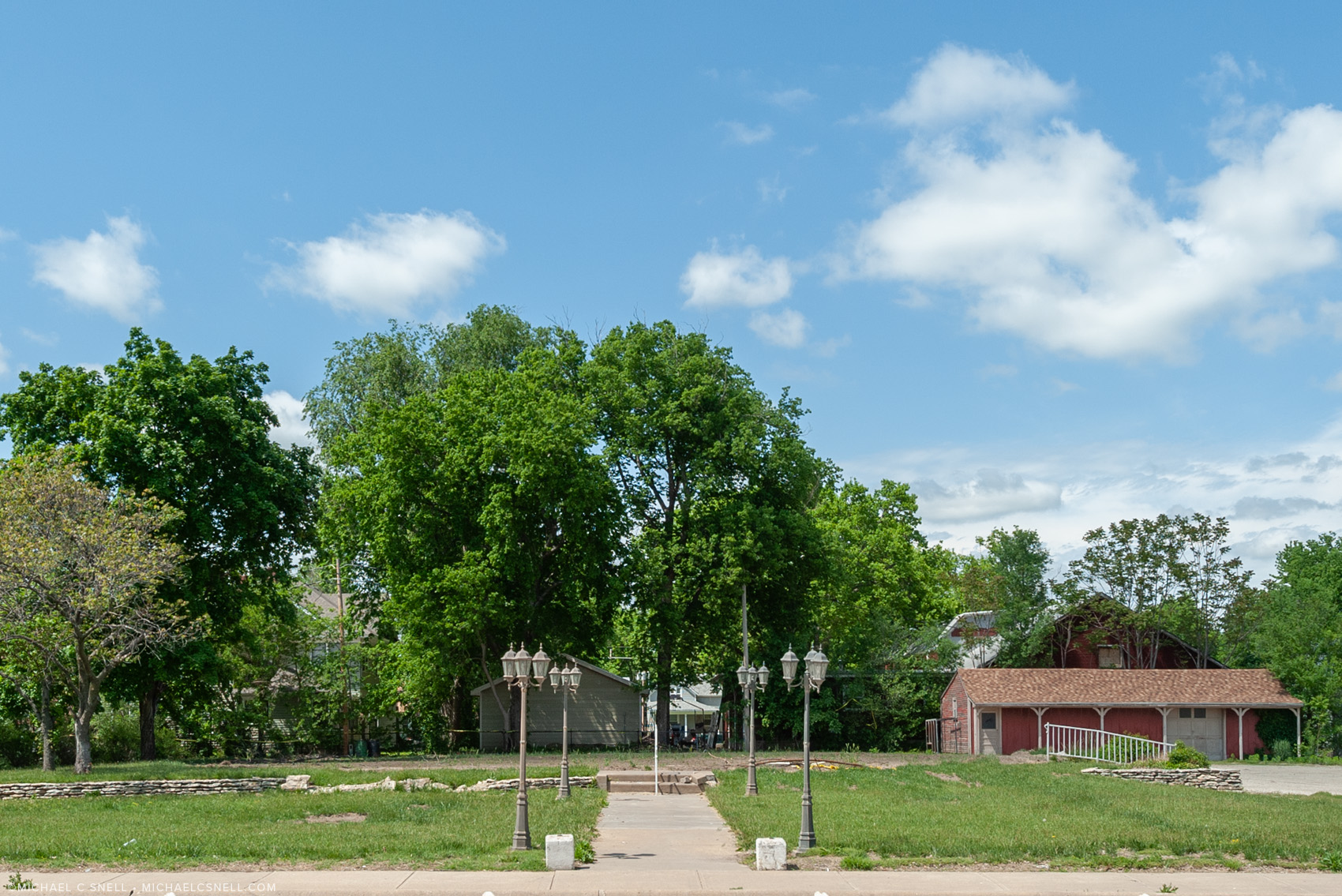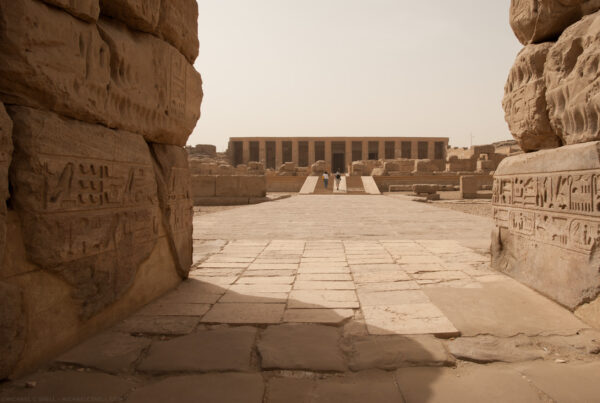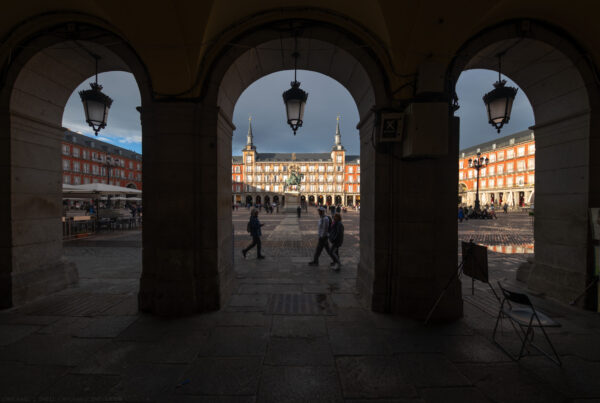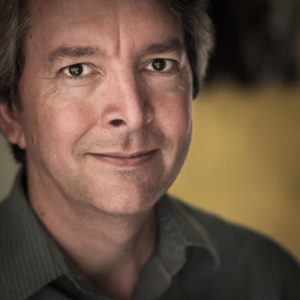I’ve had very little travel the past couple of months so I’ve been catching up on studio projects, including digitizing my slide library. Most of these images don’t have much stock value anymore, but I hate to toss them out without at least having a high-resolution archive of the physical transparencies. Once I do, it remains to be seen if I’ll actually be able to toss the slides, but that’s a decision for another day.
A transparency I shot along K-4 highway in Wabaunsee County, Kansas, in the Fall of 1989. This scene has probably changed very little over the years.
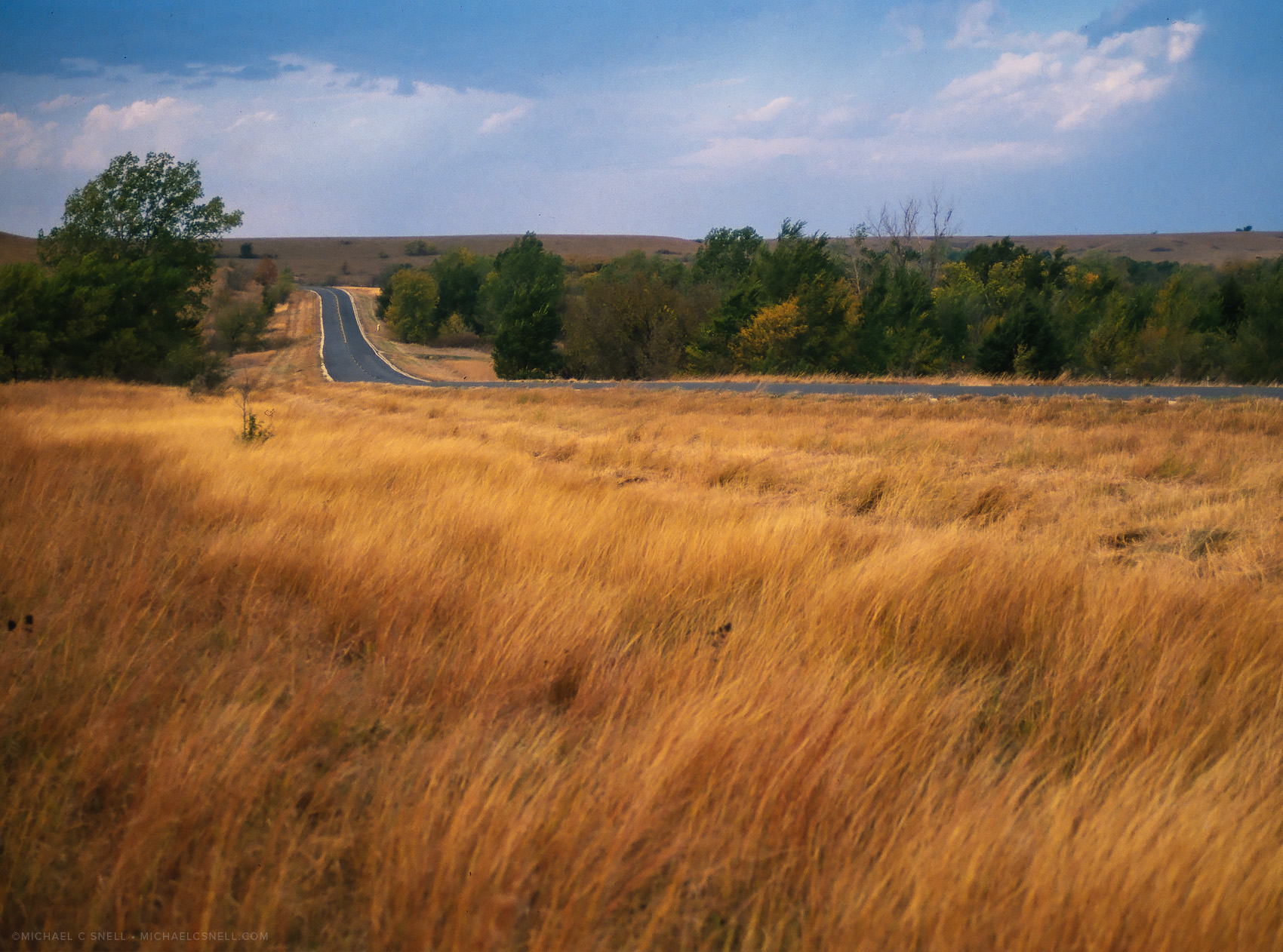
Some scans of my old transparencies still sell through various stock agencies but I’m finding that, in many cases, the only value left in my files is historical value. Scenes with cars look dated, structures change, new things get built or torn down. Images that don’t appear current are not appropriate to license for travel and tourism purposes, but they do create a time capsule of what once was.
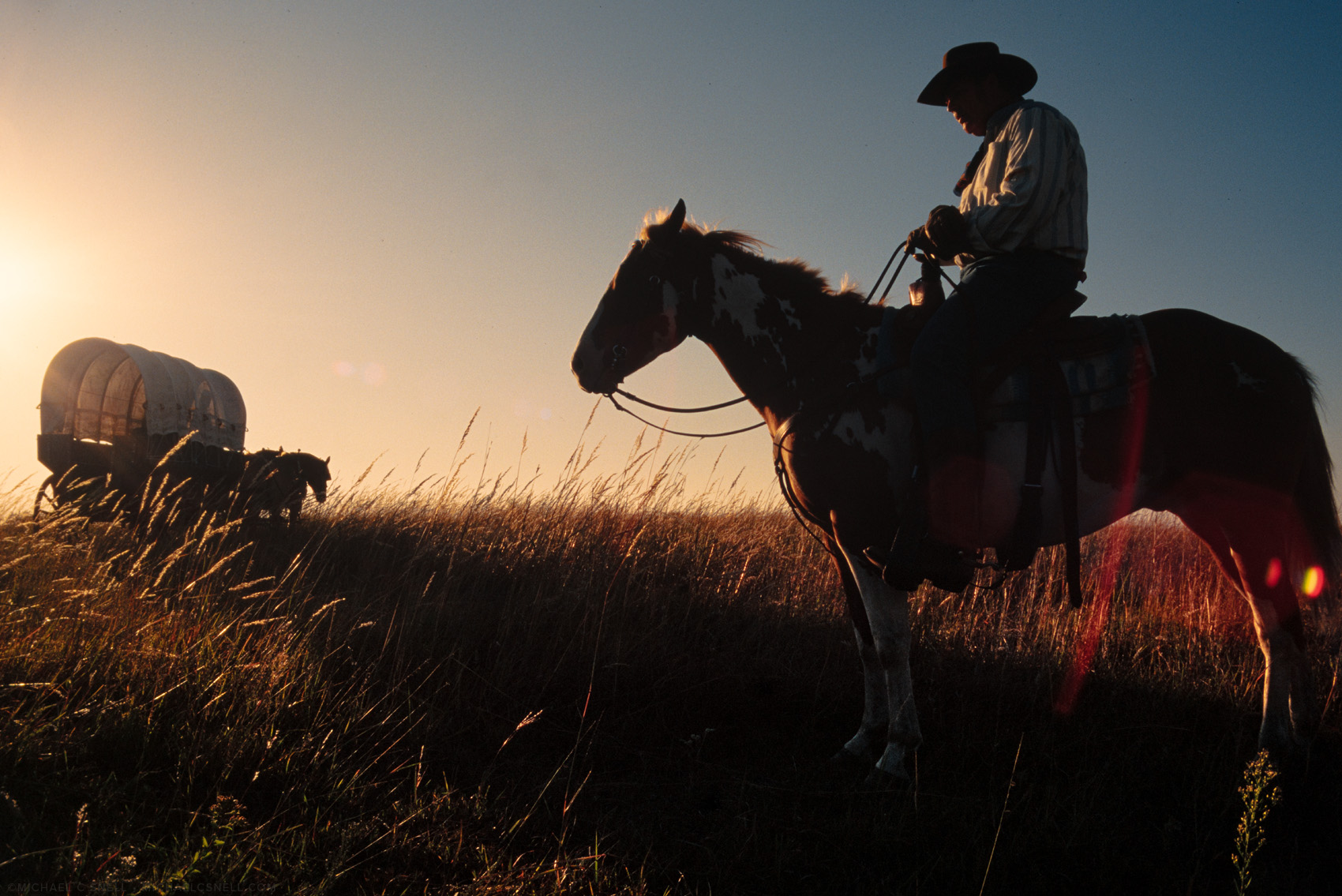
A lot of my early photography was of historic sites and re-enactors. If people aren’t recognizable, these images remain fairly “timeless”.
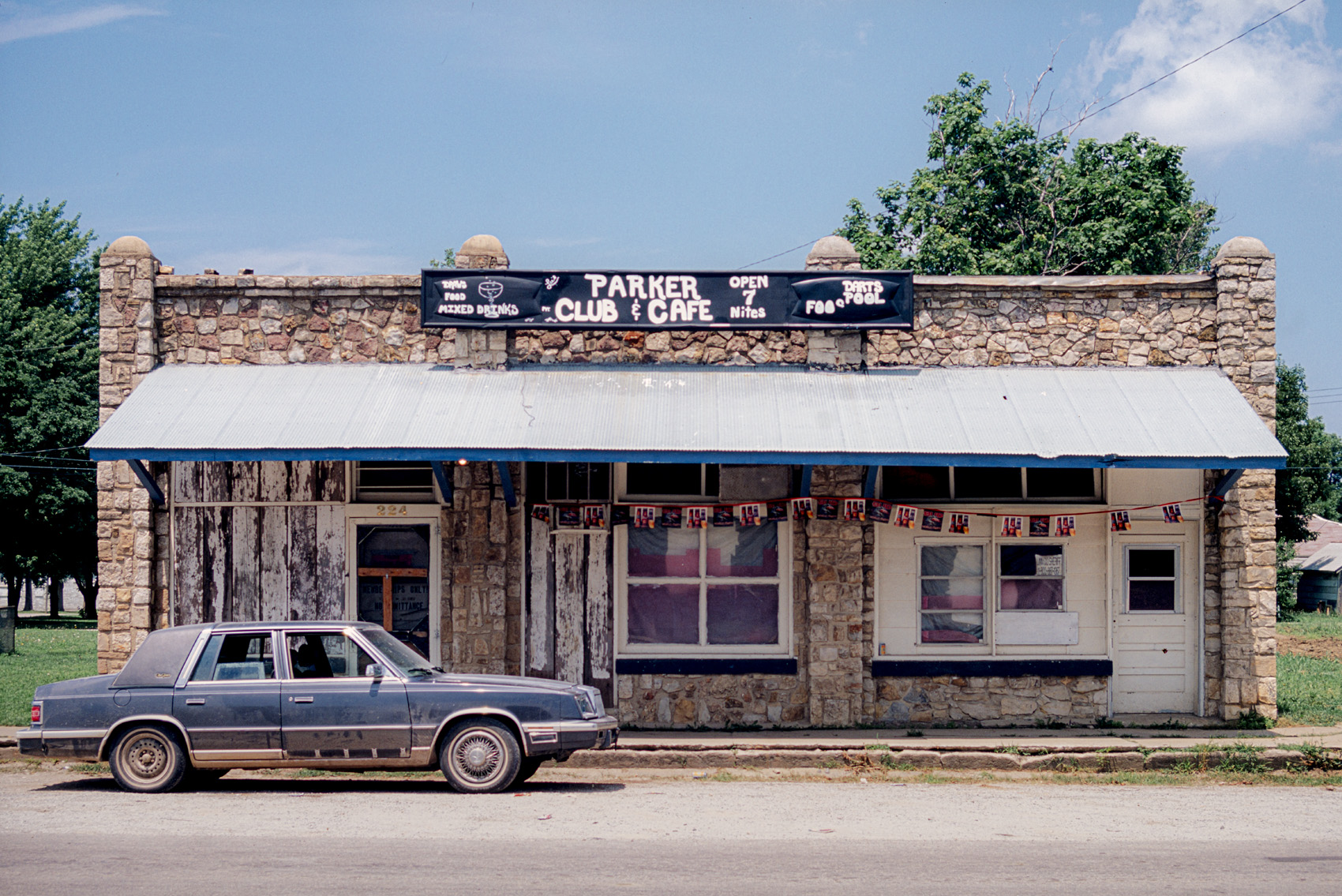
This 1996 image of a cafe in Parker, Kansas, is easily dated by the car parked out front. Or maybe the car is still there. Hard to say.
I began my travel photography career in earnest by documenting all aspects of my home state of Kansas. During my last years working at an ad agency, my wife and I took camping trips every weekend trying to gain photo coverage of every attraction, museum, scenic area and historical site in Kansas, in hopes of producing our own travel guide. We never found a publisher for that project, but I did accumulate a comprehensive stock library of the state that I continued to license as stock for years.
I left the agency in 1997. Many of these Kansas images date from right around that time although some go back another decade or so. Once I’d covered the state fairly thoroughly, I moved on to documenting neighboring states and expanding throughout the midwest as assignments led me further and further from home. I never stopped shooting Kansas, but did expand my focus to eventually include international destinations. By 2002-2003 I was transitioning to digital.
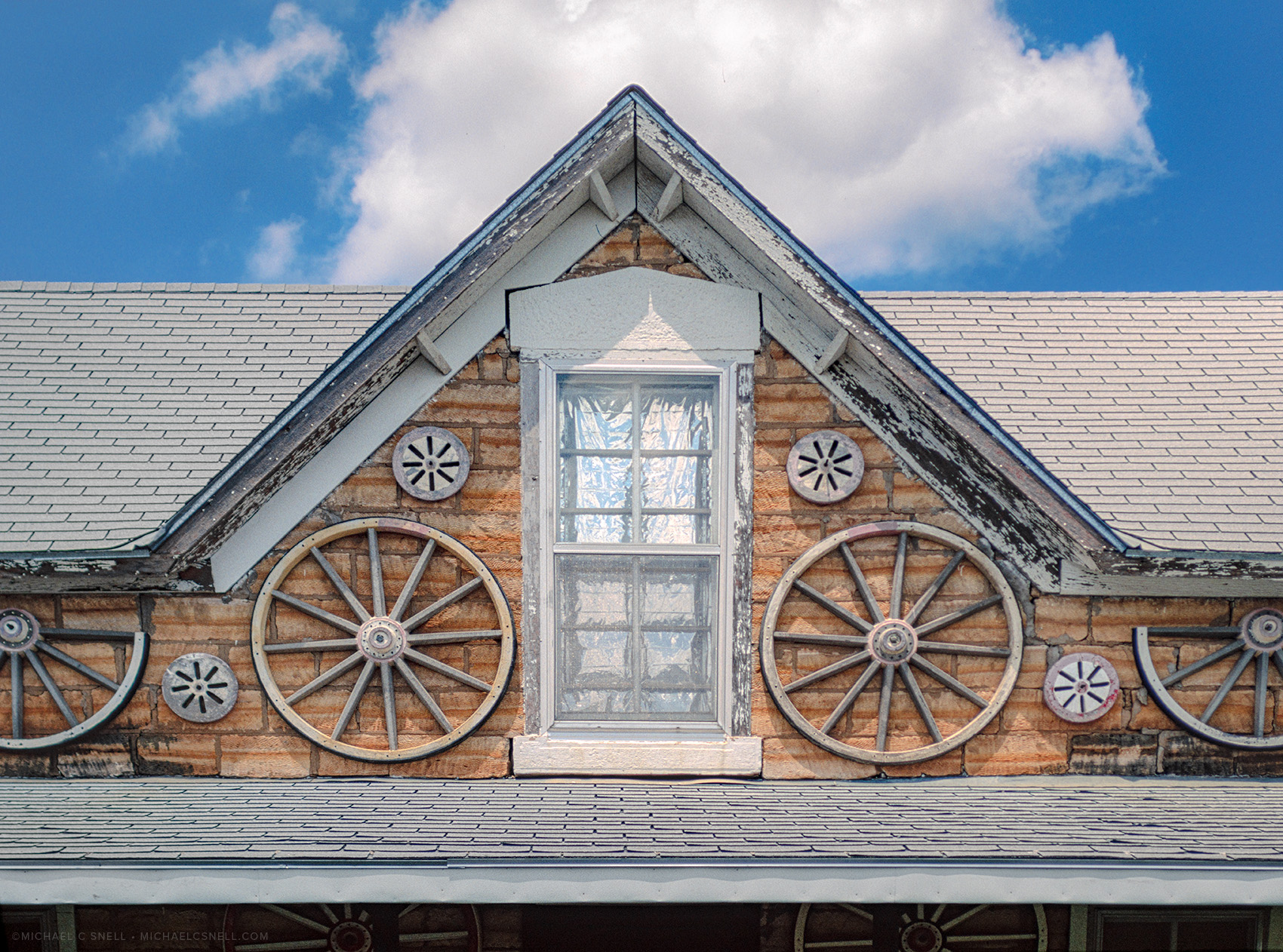
The Kyne House Museum on film in Lincoln, Kansas, in 1995.
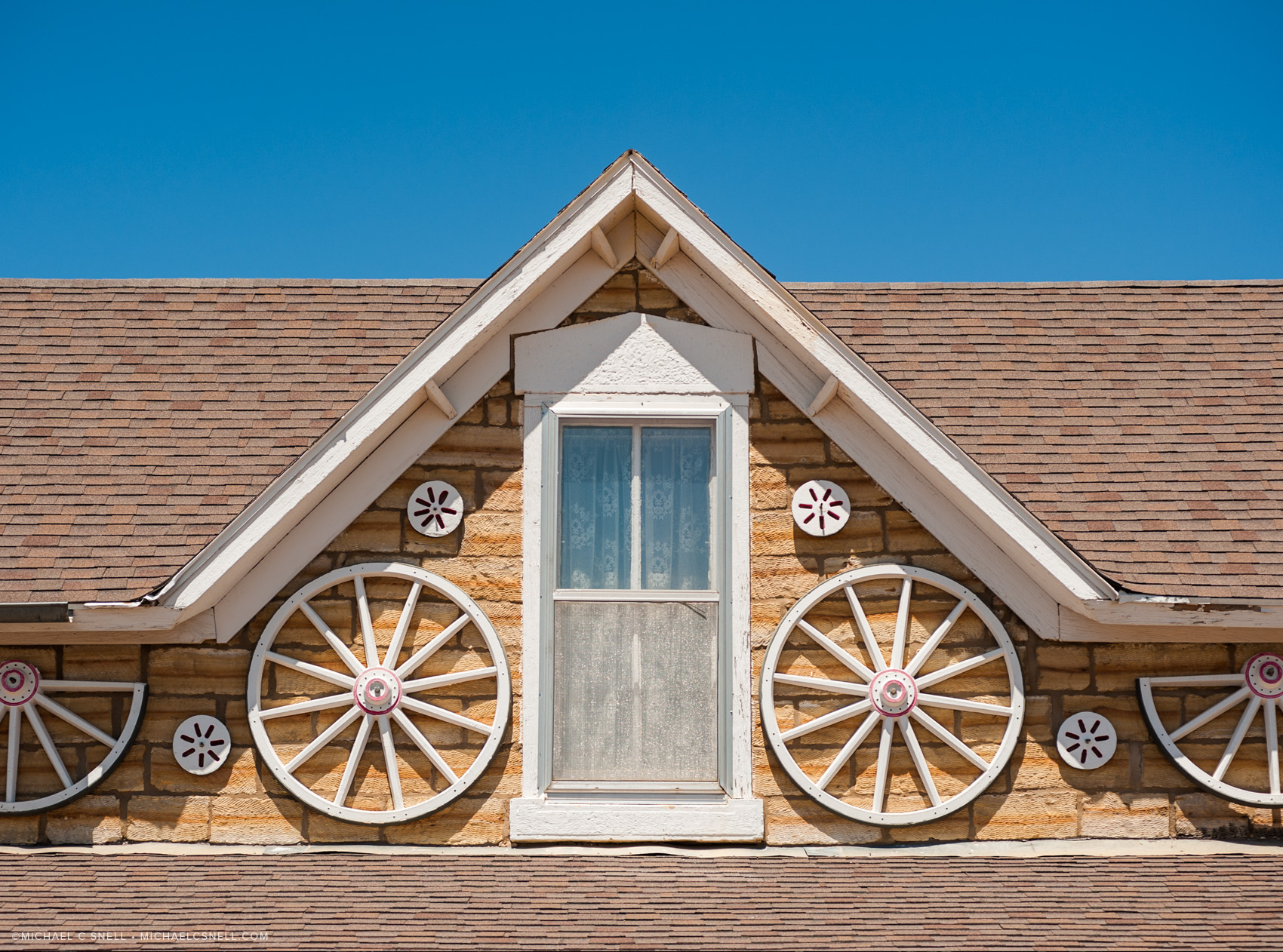
Digital photo the Kyne House Museum in Lincoln, Kansas, in 2012.
I have rephotographed many places in Kansas over the years and it’s been fun going through these early transparencies and matching them up with their digital counterparts from decades later. In some cases much has changed. In others, not much has changed at all.
The historical value comes in with things I photographed that simply no longer exist. Often it’s a building that burned or was torn down for some reason, but I even have photos of geological formations that have collapsed, or partially collapsed. I’ll focus on some of those in a later post.
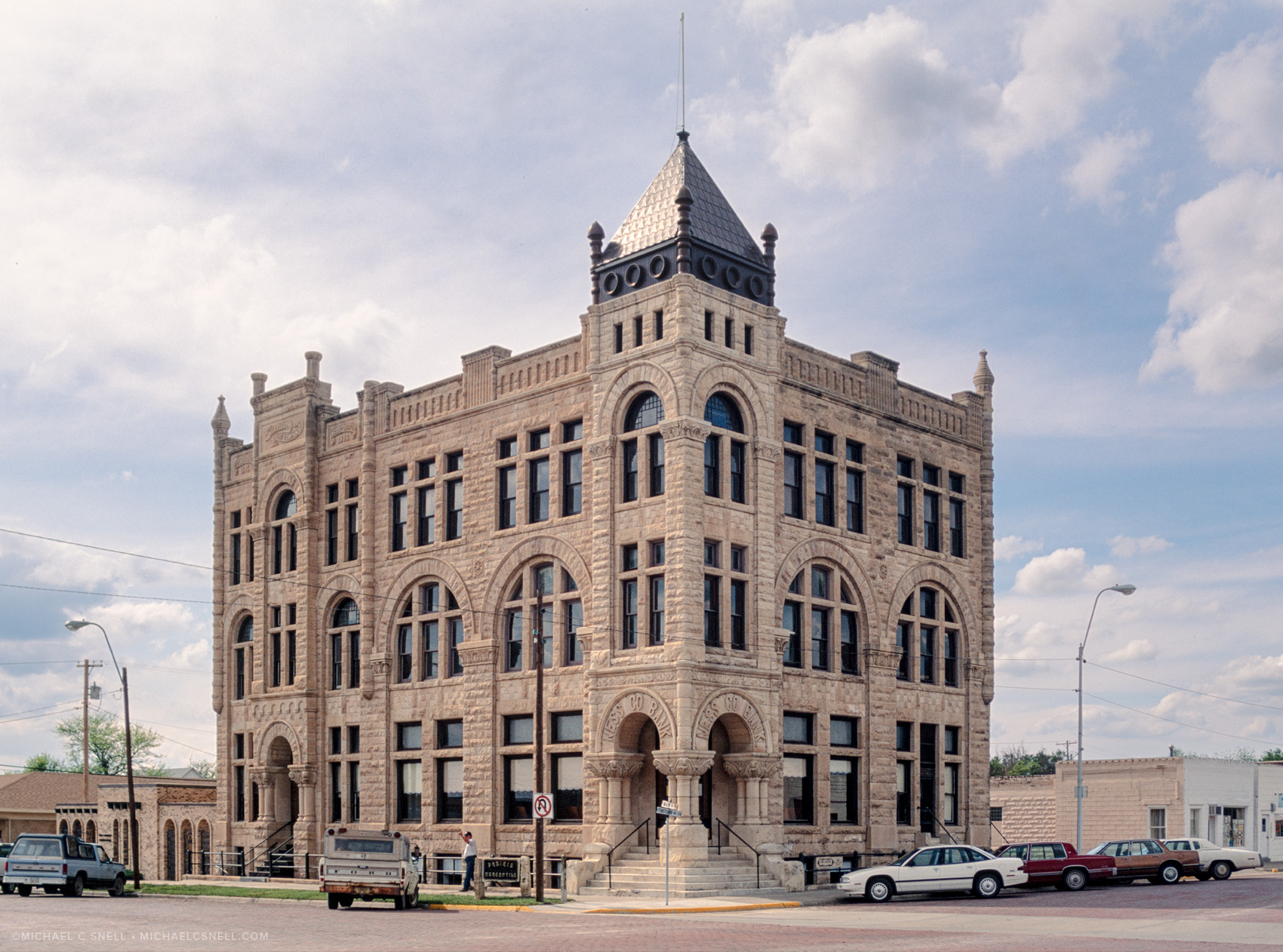
Ness County Bank on film in Ness City, Kansas, in 1995.
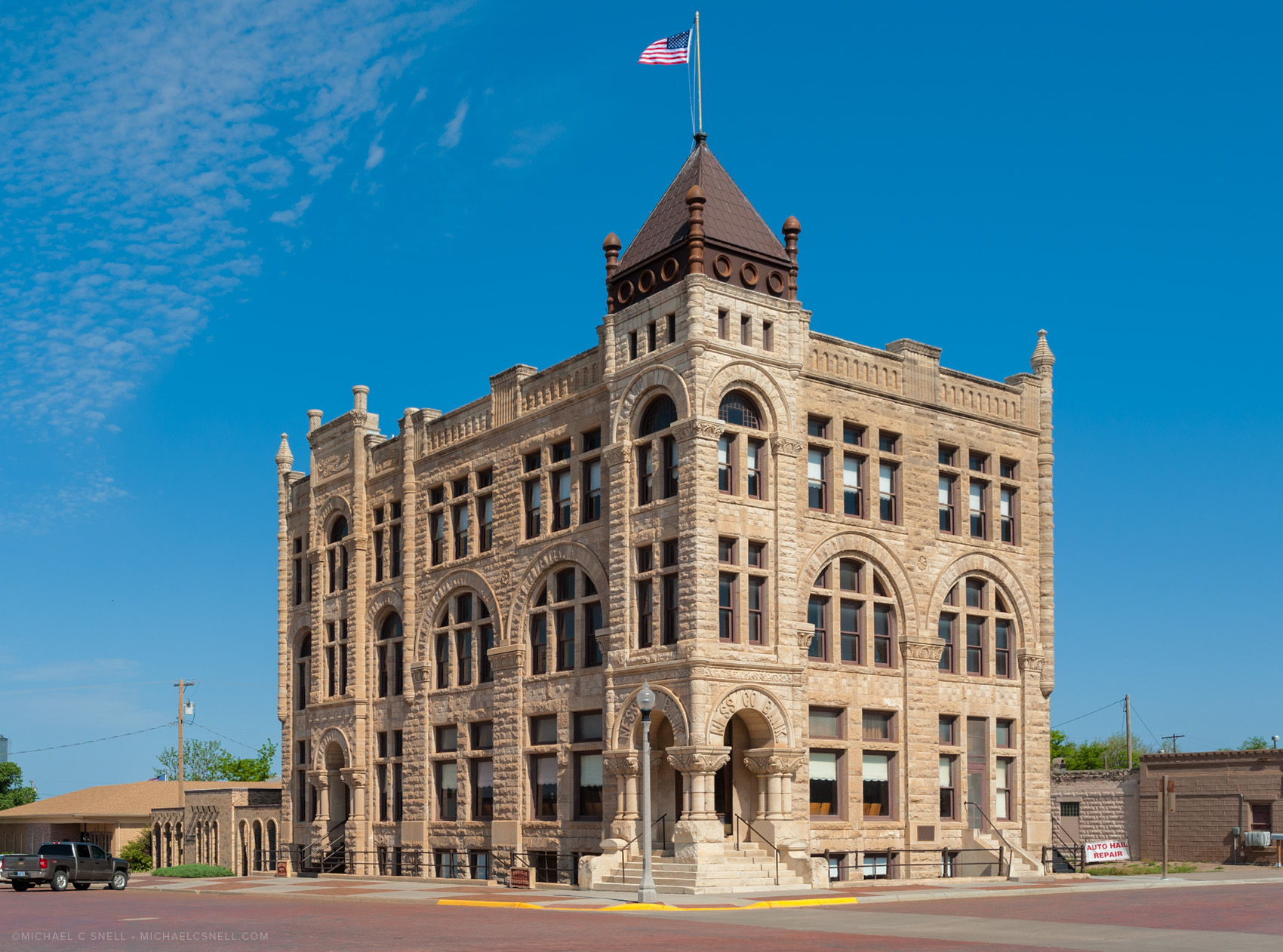
Ness County Bank on digital in Ness City, Kansas, in 2013.
This old bank building in Ness City, Kansas, had already been lovingly restored when I shot it on film and it’s good to see that it continued to be well taken care of when I rephotographed it digitally years later. The next pair of photos are of another building in Ness City that has also changed little since the 90s, but has lost its neighboring structure. Hopefully this proud building will eventually get the attention the bank building got decades ago.
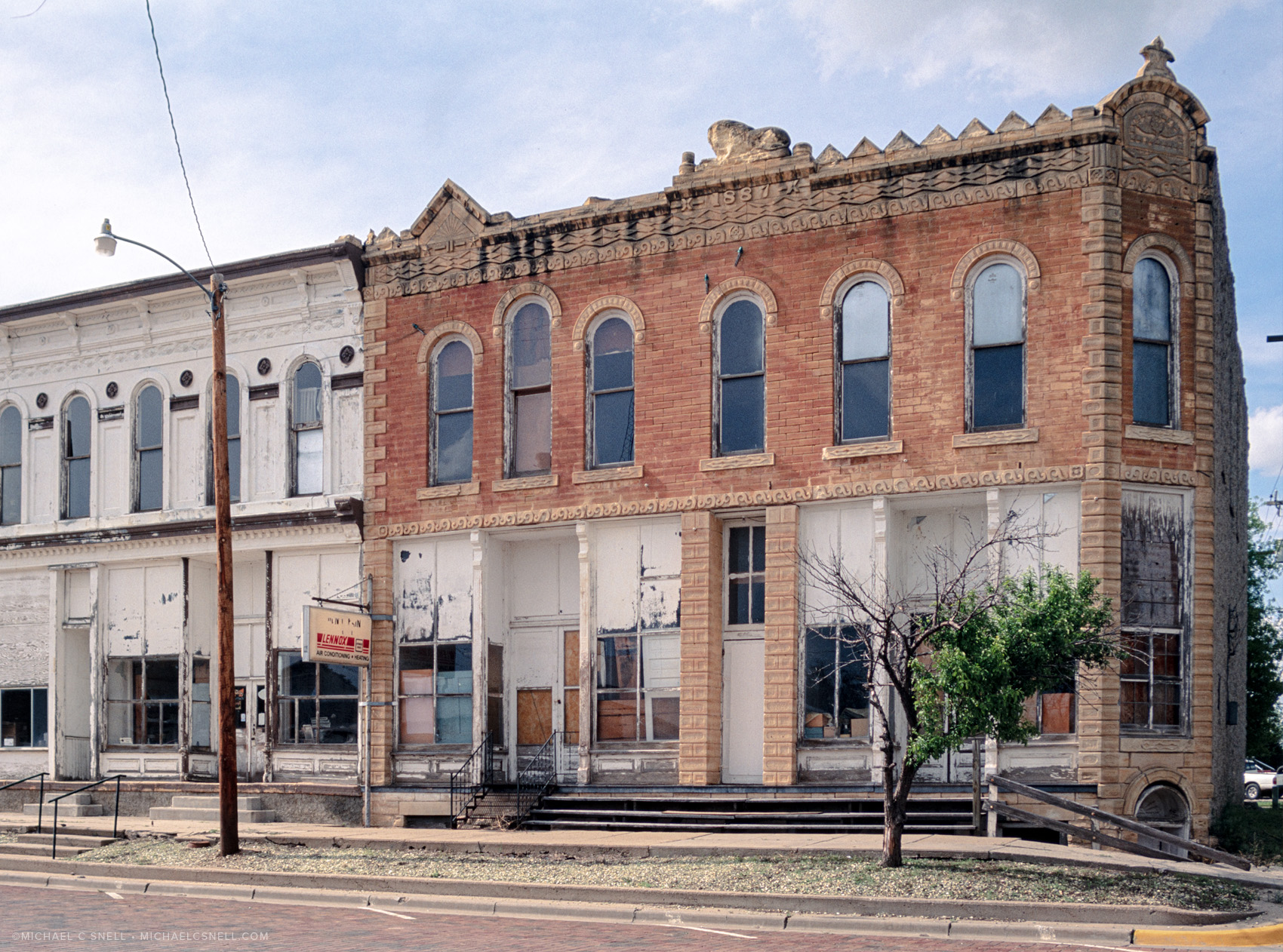
Buildings on the courthouse square on film in Ness City, Kansas, in 1995.
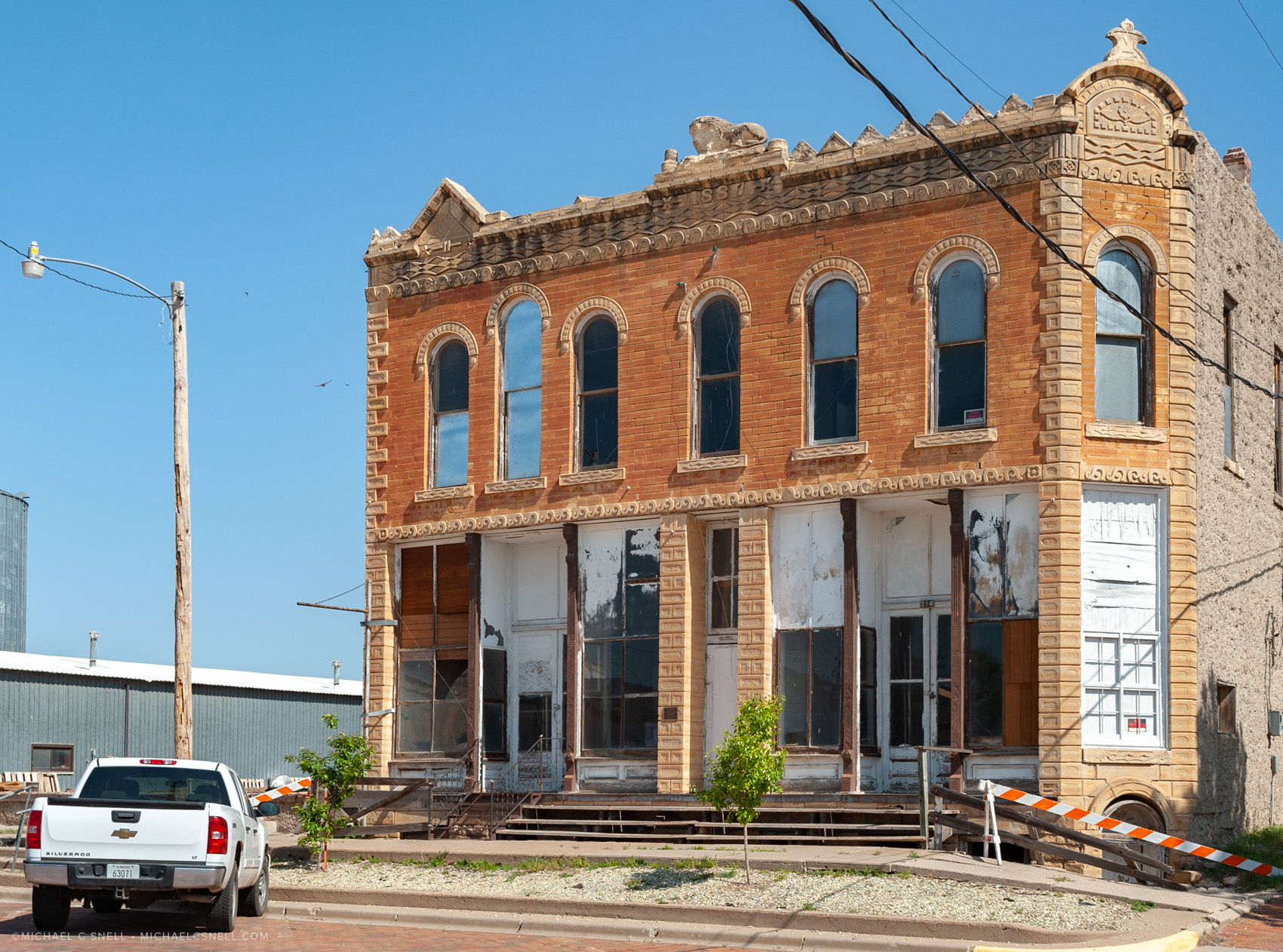
Buildings on the courthouse square on digital in Ness City, Kansas, in 2013.
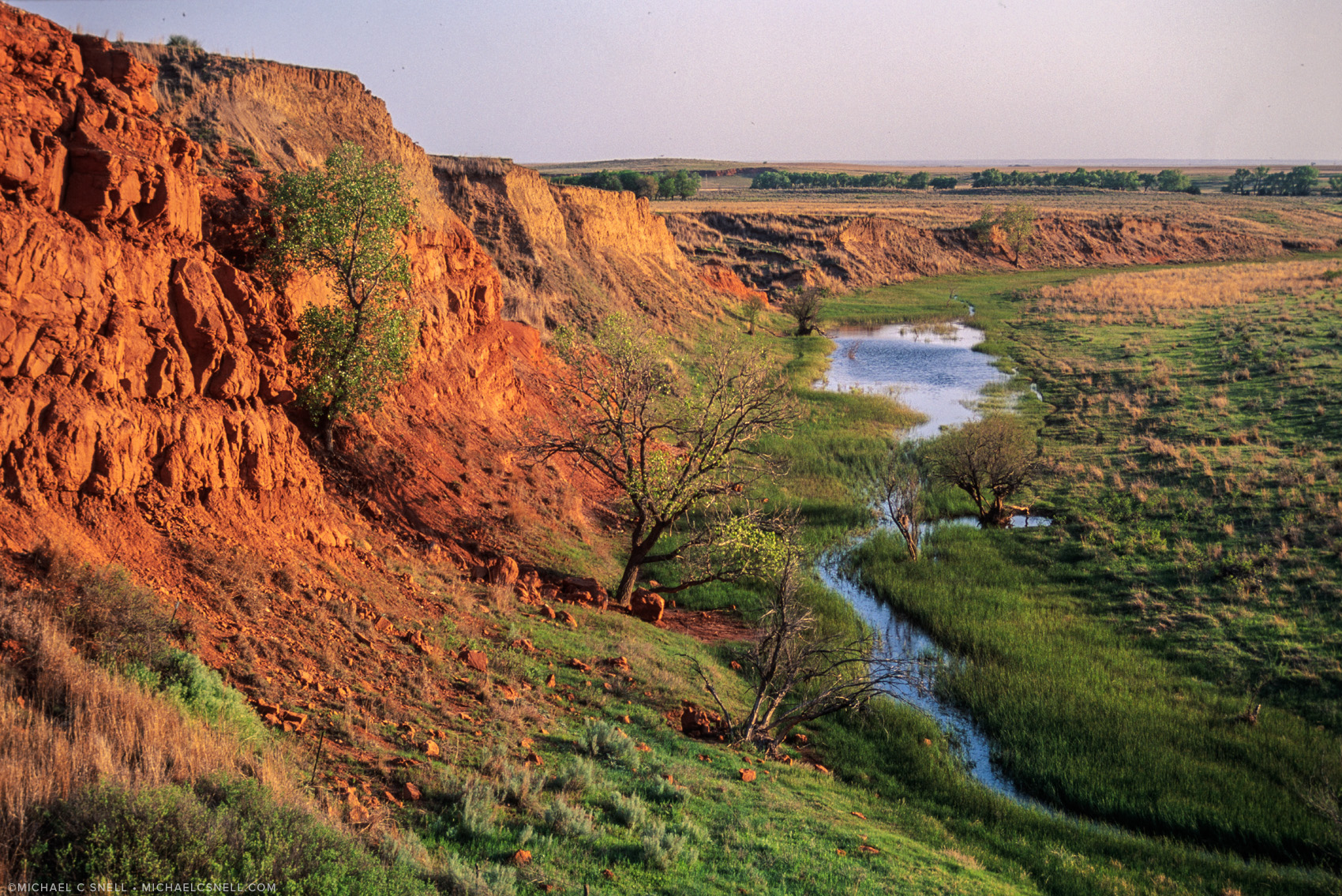
Red cliffs near Ashland, Kansas, 1999 (film).
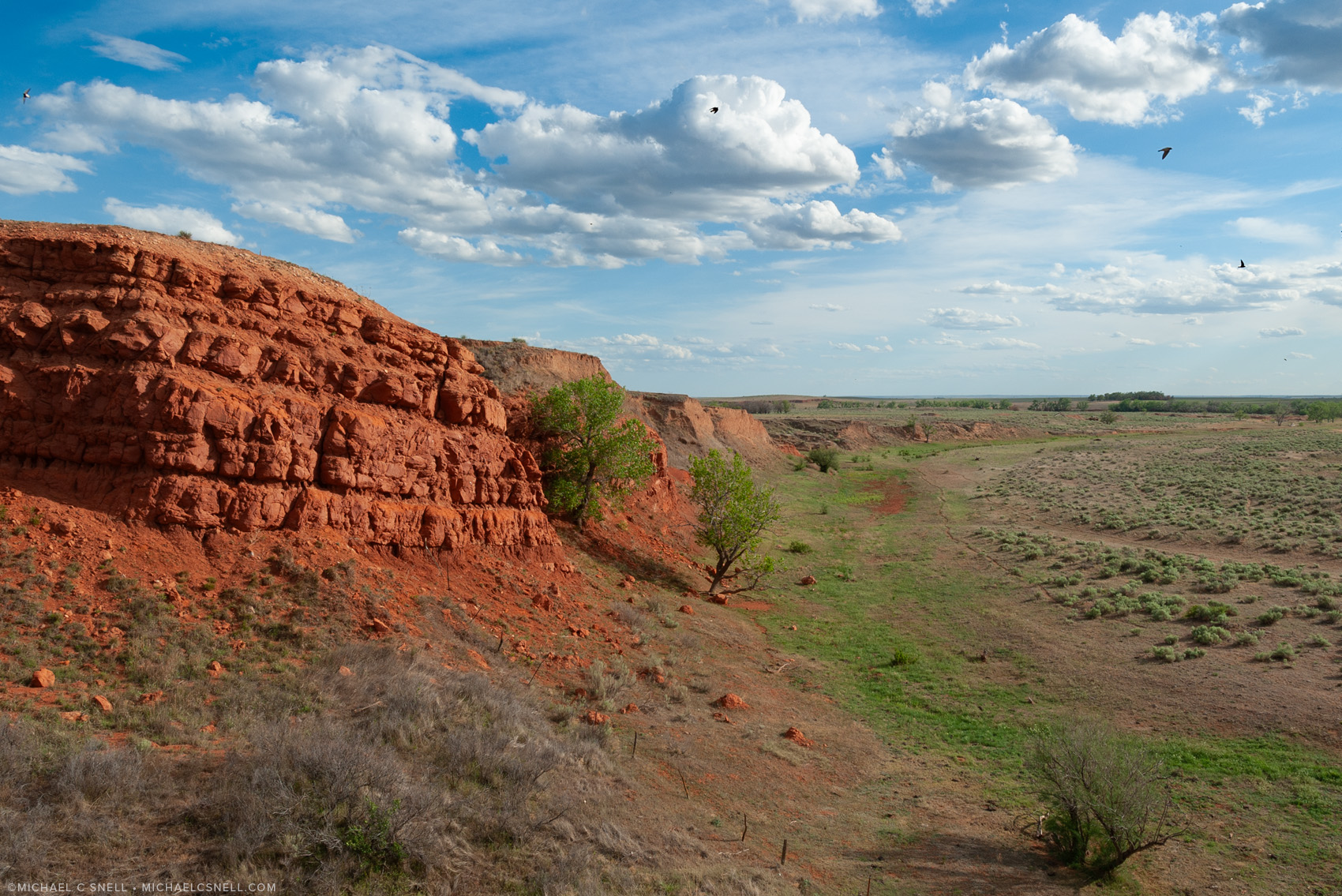
Red cliffs near Ashland, Kansas, 2013 (digital).

Red cliffs near Ashland, Kansas, 2014 (digital pano).
I’ve shot these red cliffs near Ashland, Kansas, numerous times. To get this view, you have to stand on a narrow highway bridge with a low railing while trucks zoom past you. It’s not for the faint of heart, and probably not wise, but I’ve done it repeatedly. I don’t think I’ve ever managed it in light or conditions that were as good as on my film attempt in 1999, however.
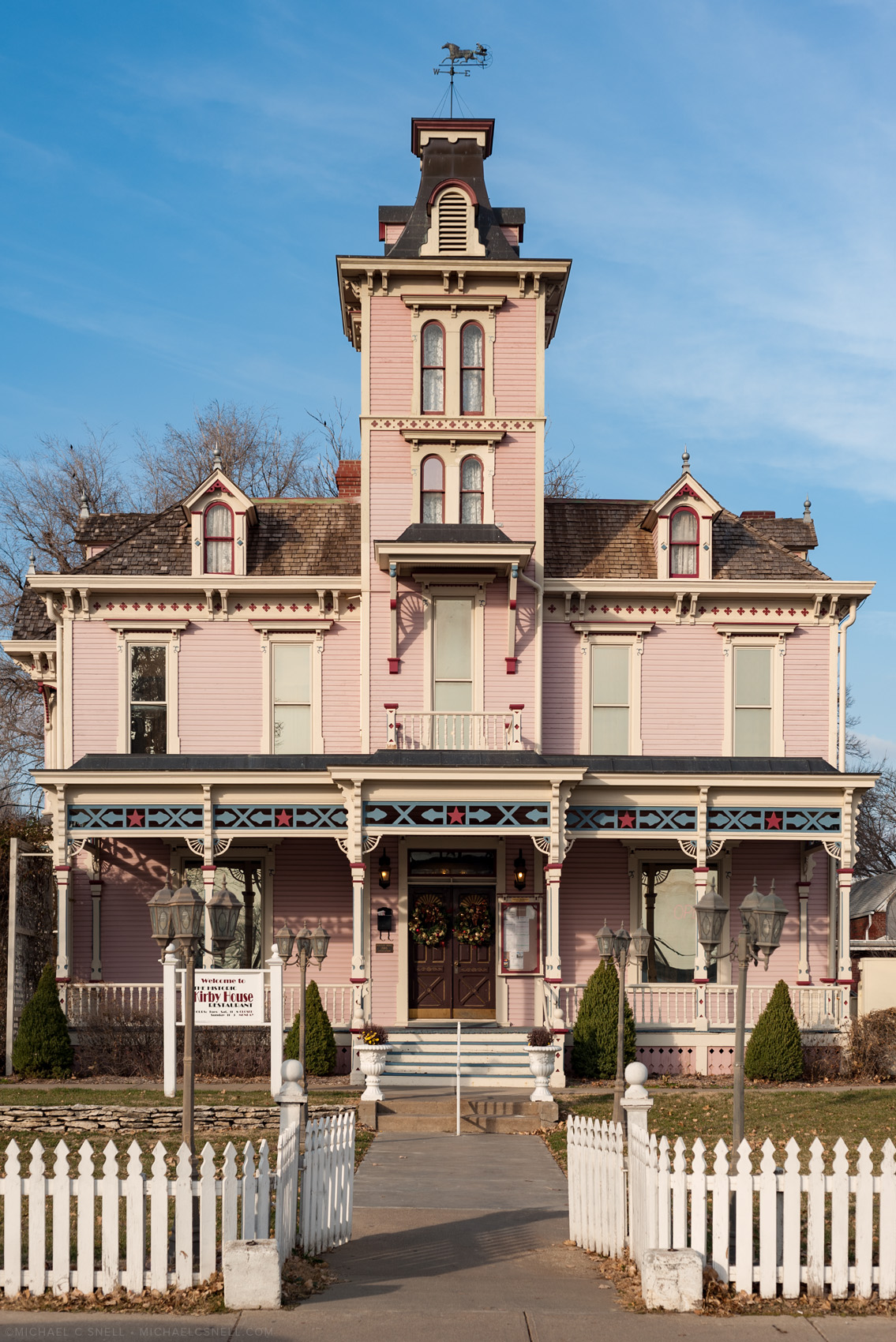
The Kirby House restaurant was located in the 1885 home of Thomas Kirby in Abilene, Kansas. This vertical view is one I took in 2012 — just a few short months before it burned in February of 2013. A good, yet sad, example of the historical value of some of my early photographs. Some things can no longer be seen in person.
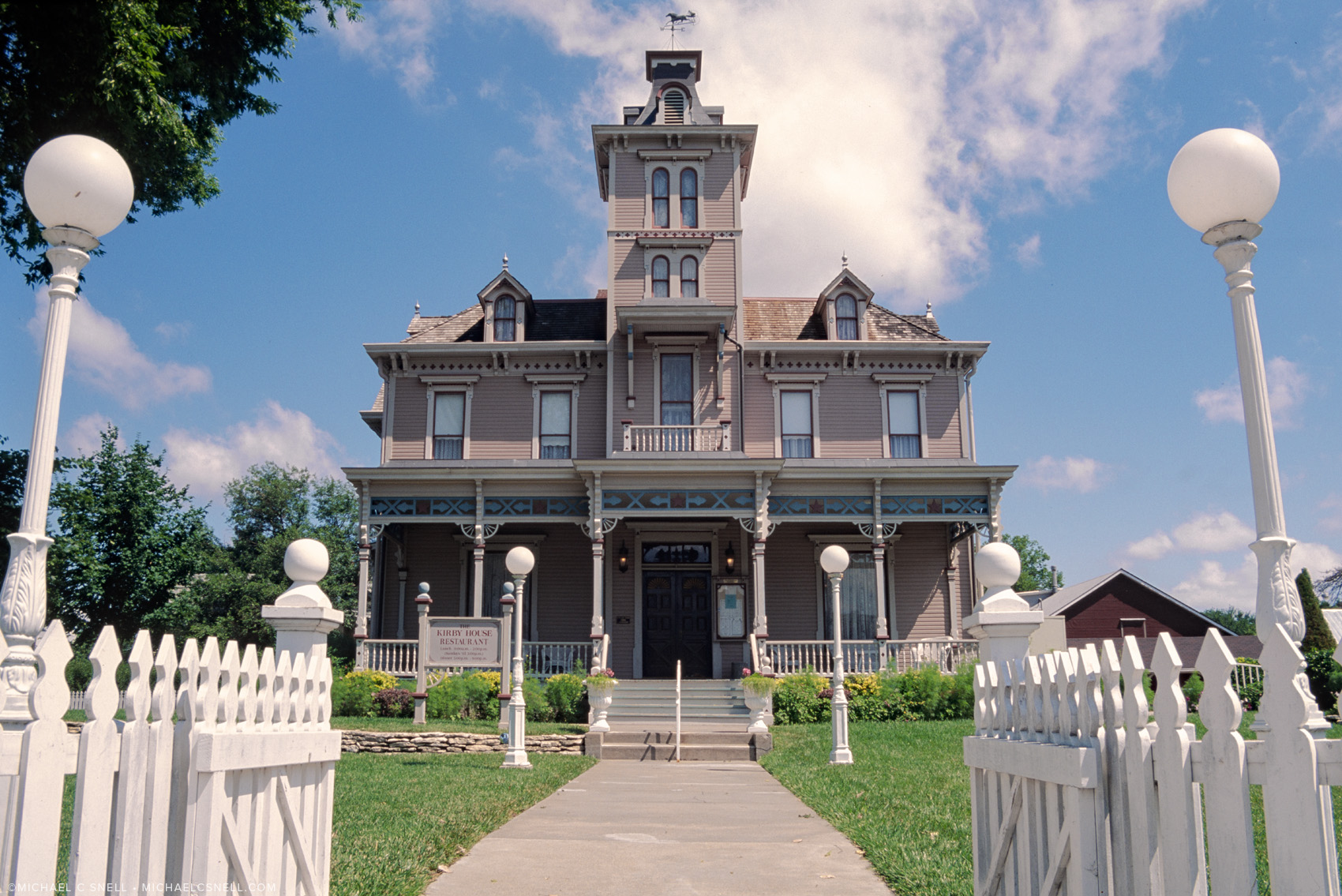
Kirby House, Abilene, Kansas 1996 (film).
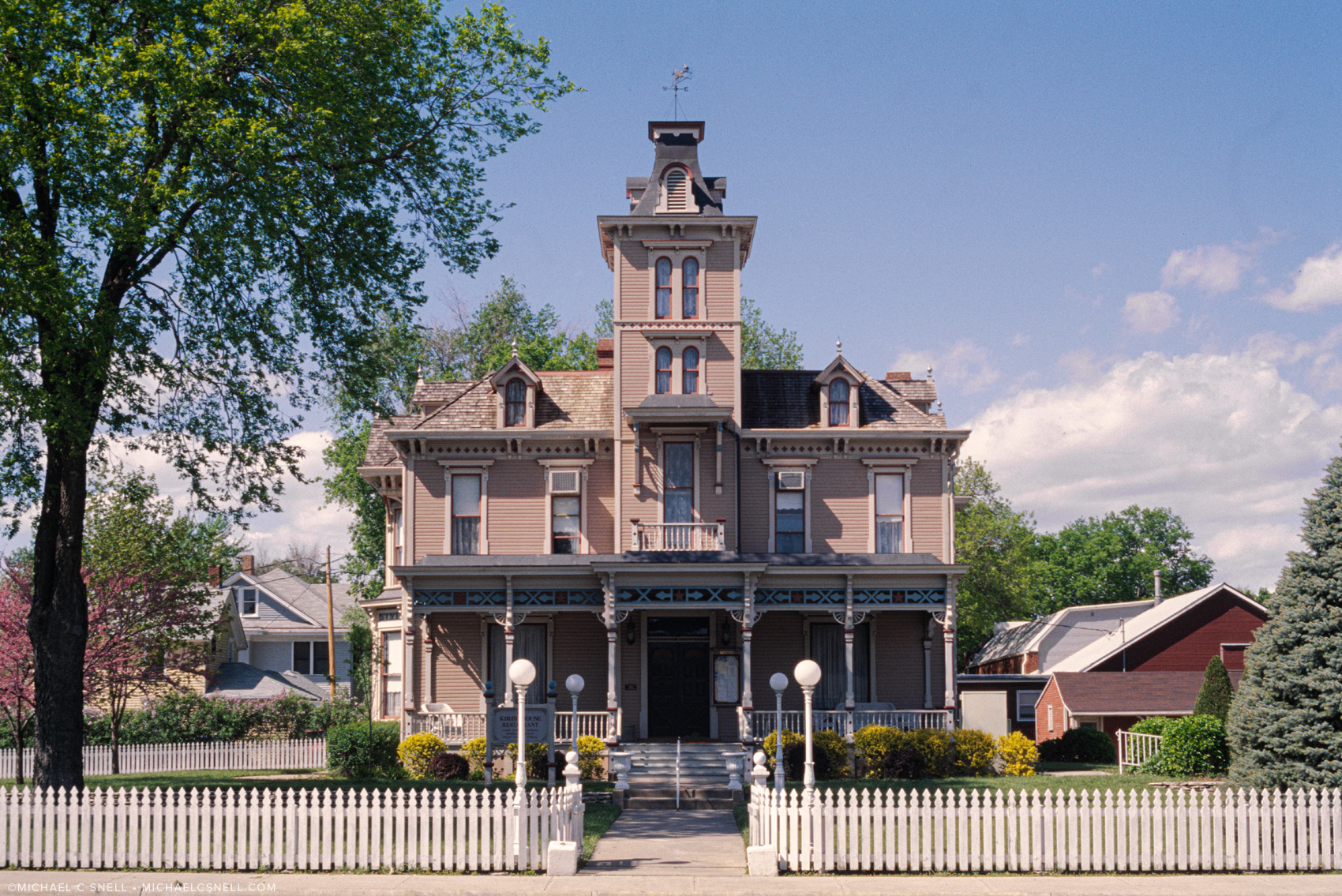
Kirby House, Abilene, Kansas 1998 (film).
